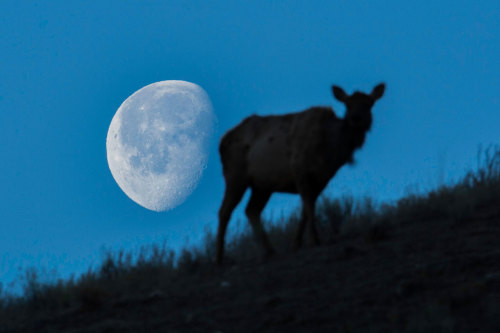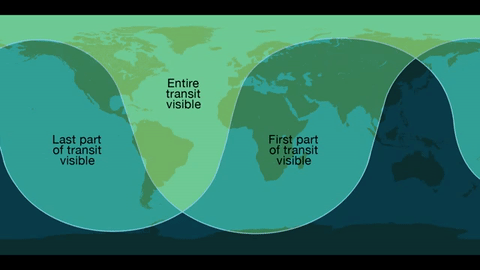Dive into your creative stream
Skywatcher - Blog Posts

Our friend - the Moon - is putting on a show tonight!
Look to the sky at 12:44 a.m. EDT to see the first full Moon of summer in the Northern Hemisphere and a partial penumbral eclipse, visible from most of North America. Want more info on this special occurrence? click HERE.
Make sure to follow us on Tumblr for your regular dose of space: http://nasa.tumblr.com
What’s Up For September 2018?
Outstanding views Venus, Jupiter, Saturn and Mars with the naked eye!

You'll have to look quickly after sunset to catch Venus. And through binoculars or a telescope, you'll see Venus's phase change dramatically during September - from nearly half phase to a larger thinner crescent!

Jupiter, Saturn and Mars continue their brilliant appearances this month. Look southwest after sunset.

Use the summer constellations help you trace the Milky Way.

Sagittarius: where stars and some brighter clumps appear as steam from the teapot.

Aquila: where the Eagle's bright Star Altair, combined with Cygnus's Deneb, and Lyra's Vega mark the Summer Triangle.

Cassiopeia, the familiar "w"- shaped constellation completes the constellation trail through the Summer Milky Way. Binoculars will reveal double stars, clusters and nebulae.

Between September 12th and the 20th, watch the Moon pass from near Venus, above Jupiter, to the left of Saturn and finally above Mars!

Both Neptune and brighter Uranus can be spotted with some help from a telescope this month.

Look at about 1:00 a.m. local time or later in the southeastern sky. You can find Mercury just above Earth's eastern horizon shortly before sunrise. Use the Moon as your guide on September 7 and 8th.

And although there are no major meteor showers in September, cometary dust appears in another late summer sight, the morning Zodiacal light. Try looking for it in the east on moonless mornings very close to sunrise. To learn more about the Zodiacal light, watch "What's Up" from March 2018.

Watch the full What’s Up for September Video:
There are so many sights to see in the sky. To stay informed, subscribe to our What’s Up video series on Facebook.
Make sure to follow us on Tumblr for your regular dose of space: http://nasa.tumblr.com
Heads-up, Earthlings! The annual Geminid meteor shower has arrived, peaking overnight Dec. 13-14. It's a good time to bundle up! Then, go outside and let the universe blow your mind!
The Geminids are active every December, when Earth passes through a massive trail of dusty debris shed by a weird, rocky object named 3200 Phaethon. The dust and grit burn up when they run into Earth's atmosphere in a flurry of "shooting stars."
The Geminids can be seen with the naked eye under clear, dark skies over most of the world, though the best view is from the Northern Hemisphere. Observers will see fewer Geminids in the Southern Hemisphere, where the radiant doesn't climb very high over the horizon. Skywatching is easy. Just get away from bright lights and look up in any direction! Give your eyes time to adjust to the dark. Meteors appear all over the sky.
Make sure to follow us on Tumblr for your regular dose of space: http://nasa.tumblr.com.
Mercury In the Spotlight
For more than seven hours on Monday, May 9, Mercury will be visible as a tiny black dot crossing the face of the sun. This rare event – which happens only slightly more than once a decade – is called a transit.

Although Mercury whips around the sun every 88 days – over four times faster than Earth – the three bodies rarely align. Because Mercury orbits in a plane 7 degrees tilted from Earth’s orbit, it usually darts above or below our line of sight to the sun. As a result, a Mercury transit happens only about 13 times a century. The last one was in 2006, and the next one isn’t until 2019.

When: On May 9, shortly after 7:00 a.m. EDT, Mercury will appear as a tiny black dot against a blazing backdrop, traversing the sun’s disk over seven and a half hours. Mercury will cross the edge of the sun (ingress) after 7:00 a.m. EDT. The mid-transit point will occur a little after 10:45 a.m. EDT, with egress around 2:30 p.m. EDT.

Where: Skywatchers in Western Europe, South America and eastern North America will be able to see the entirety of the transit. The entire 7.5-hour path across the sun will be visible across the Eastern U.S. – with magnification and proper solar filters – while those in the West can observe the transit in progress at sunrise.

Safety!
Unlike the 2012 Venus transit of the sun, Mercury is too small to be visible without magnification from a telescope or high-powered binoculars. Both must have safe solar filters made of specially-coated glass or Mylar; you can never look directly at the sun. We’re offering several avenues for the public to view the event without specialized and costly equipment, including images on NASA.gov, a one-hour NASA Television special, and social media coverage.

The Science…Why are Planetary Transits Important?
Transits like this allowed scientists in the 17th century to make the first estimates of Earth’s distance from the sun. Transit observations over the past few centuries have also helped scientists study everything from the atmosphere of Venus to the slight shifts in Mercury’s orbit that could only be explained by the theory of general relativity. Because we know Mercury’s size and location precisely, this transit will help scientists calibrate telescopes on solar observatories SDO, SOHO, and Hinode.

Transits can also teach us more about planets – both in and out of our solar system. The Venus transit in 2012 provided observations of the planet's atmosphere. Transits are also the main way we find planets outside the solar system, called exoplanets.

The transit method looks for a drop in the brightness of a star when a planet passes in front of it. This method will not find every planet – only those that happen to cross our line of sight from Earth to the star. But with enough sensitivity, the transit method through continuous monitoring is a great way to detect small, Earth-size planets, and has the advantage of giving us both the planet’s size (from the fraction of starlight blocked), as well as its orbit (from the period between transits). Our Kepler/K2 mission uses this method to find exoplanets, as will the Transiting Exoplanet Survey Satellites, or TESS, following its launch in 2017/2018.
We will stream a live program on NASA TV and the agency’s Facebook page from 10:30 to 11:30 a.m. -- an informal roundtable during which experts representing planetary, heliophysics and astrophysics will discuss the science behind the Mercury transit. Viewers can ask questions via Facebook and Twitter using #AskNASA.
Make sure to follow us on Tumblr for your regular dose of space: http://nasa.tumblr.com